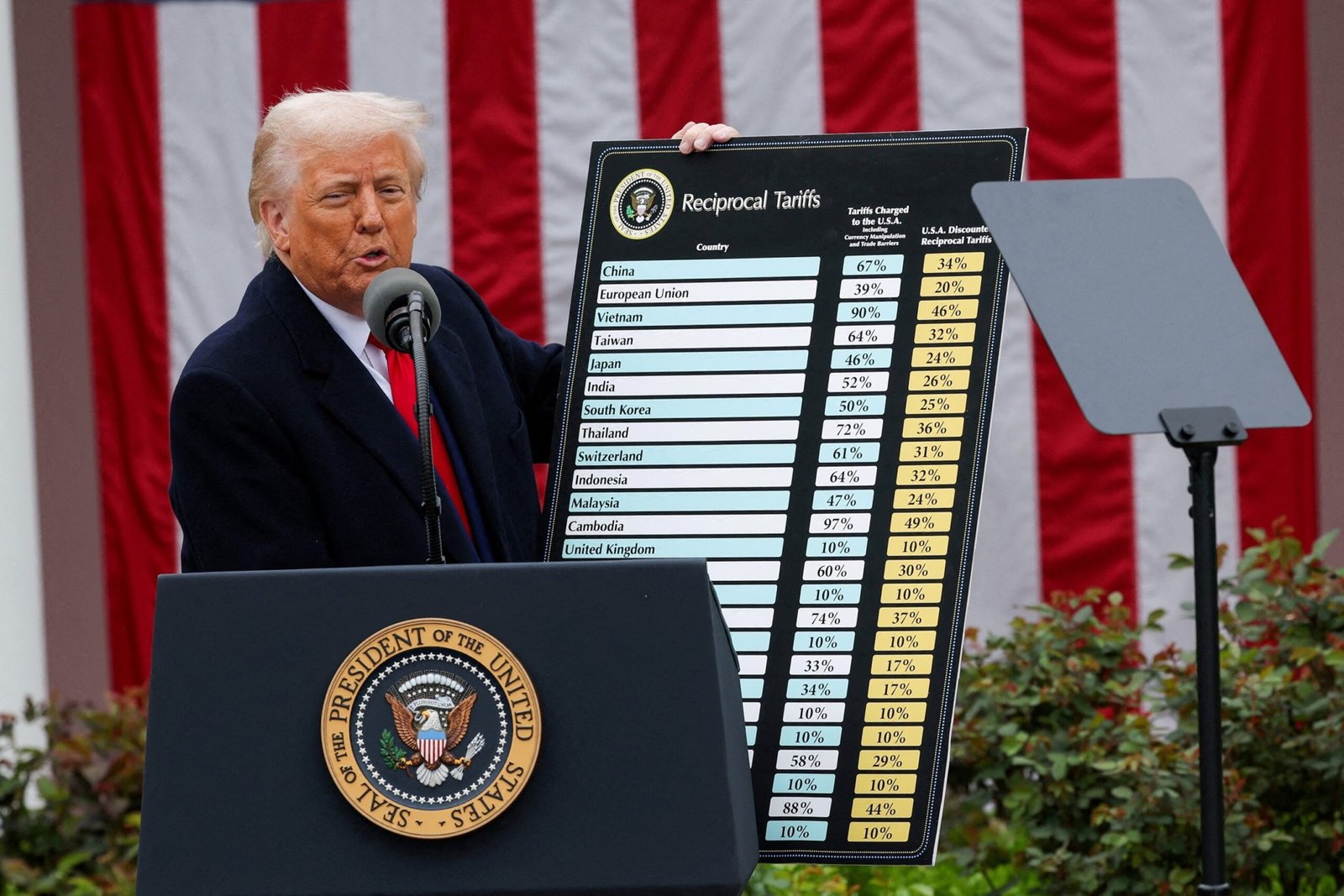When President Donald Trump announced his controversial tariffs on practically all commercial partners in the world, he repeatedly called them “reciprocal”, an answer, he said, to those nations that had hit the United States with tariffs and hurt the US economy.
But Trump’s statement is misleading not only because some of the nations hit with tariffs have not raised any against the United States, but also because mathematics apparently used by the administration to emerge the tariffs are not maintained, according to several economic experts.
The White House Rate list issued against each location includes different rates. When announcing rates at Rose Garden on Wednesday, Trump said the numbers were calculated based on “the combined rate of all their rates, non -monetary barriers and other forms of deception.” Trump added that he was being “friendly” and divided that number by half and called it a “discount.”

President Donald Trump offers comments on rates in the Rosas Garden at the White House in Washington, DC, on April 2, 2025.
Carlos Barria/Reuters
The calculations for almost all rates were determined by dividing the commercial deficit of each nation with the value of its imports, according to the analysis of economic experts. That number was divided by half for Trump’s “discount” for the final rate percentage, experts said.
“Before yesterday, 99% of commercial economists had never seen a formula like this,” said Oren Ziv, an assistant professor of Economics at Michigan State University, ABC News Friday.
Several economic experts and journalists criticized the formula shortly after the speech, including James Surowiecki, a journalist and author of financial news, who explained it in A publication in X.
“Therefore, we have a commercial deficit of $ 17.9 billion with Indonesia. Its exports to the US are $ 28 billion. $ 17.9/$ 28 = 64%, which Trump states that the rate rate of Indonesia charges us. What extraordinary nonsense is this,” he said in his position.
The White House later turn off An explanation of their calculations that said it was using the commercial deficit and import figures.
“This calculation assumes that persistent commercial deficits are due to a combination of tariff and non -tariff factors that prevent balance.

A container ship leaves the Newark port for the Atlantic Ocean on April 3, 2025 in New York City.
Spencer Platt/Getty Images
The director of the National Economic Council, Kevin Hasett, told Fox News on Thursday about the thought of the administration behind his policy.
“Then, what happened was that the United States commercial representative analyzed where commercial deficits were and adjusted the rates to respond to the national emergency that I think we all agree,” he said.
Ziv said that this logic does not fit with any modern definition of commercial deficits.
“When economists study commercial deficiency, they find no evidence of this logic,” he said.
Ziv said that commercial deficits are determined in part by financial markets, not just the demand for imports and manufacturing.
Ziv said that it is not very likely that the formula produces the results that the administration seeks.
“Since World War II, most industrial countries have followed a constant set of commercial policies rules. Essentially, they learned that commercial wars do not help anyone,” he said.




